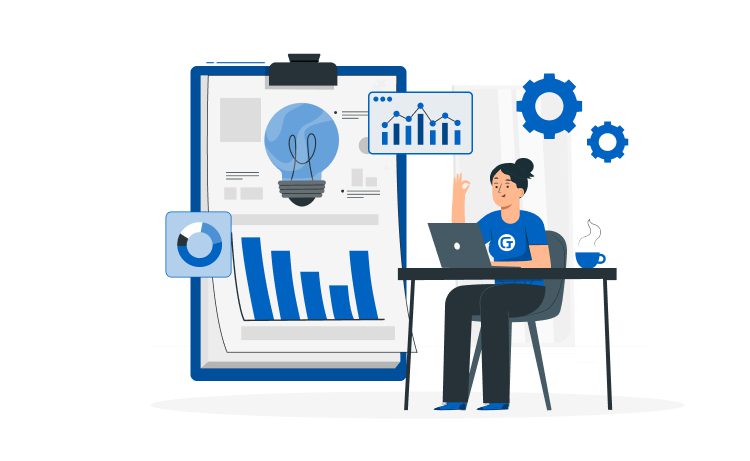
Software Development for Startups in 2024: An In-depth Guide



In today’s fast-paced business landscape, startups are looking for advantages that can stand out from the competition and achieve rapid growth. The first important aspect that can break a startup’s success is software development. By employing efficient and effective software development processes, startups can accelerate their growth trajectory and gain an unfair advantage in the market.
In this article, we’ll look at seven actionable tips to accelerate custom software development for startups that will allow them to build a business with an unprecedented advantage.
Content
To thrive in this dynamic landscape, startups need to prioritize and expedite their software development processes. Let’s dive into why startups must focus on speeding up their software development efforts and its benefits.
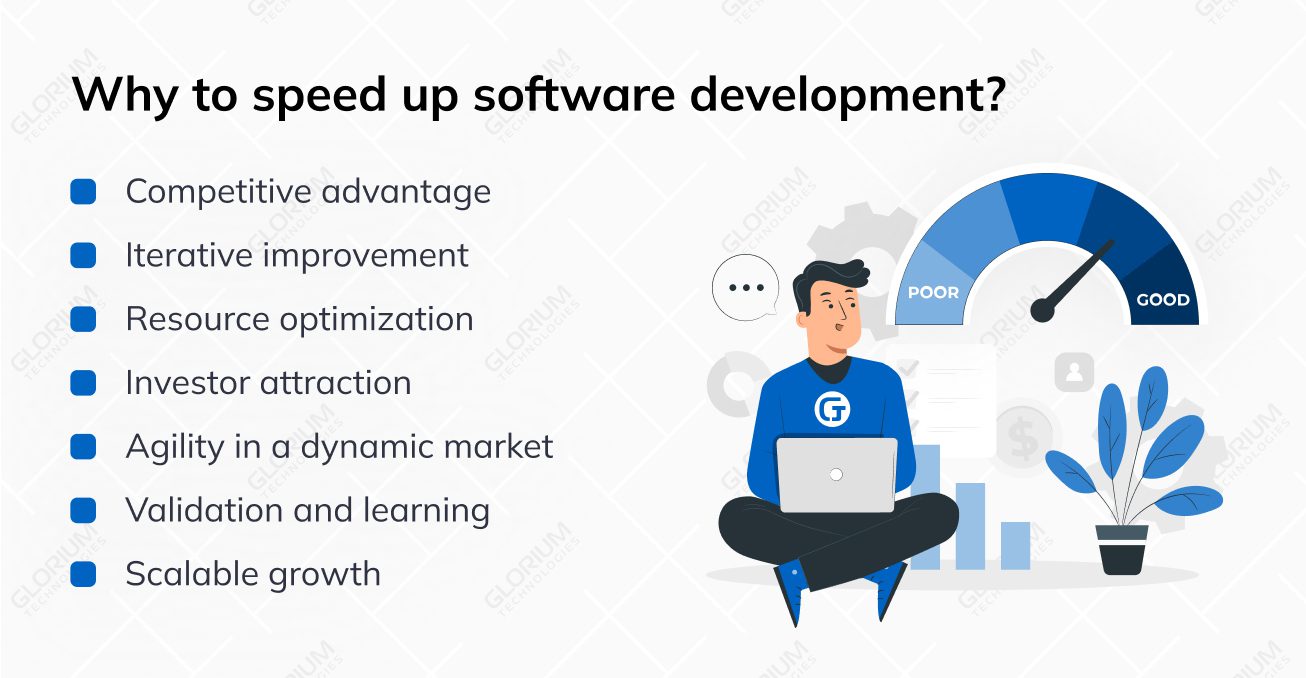
The startup software development process is a critical journey that can shape the success of a new venture. By understanding and implementing the key stages involved, startups can effectively navigate the complexities of software development for startups, from ideation to deployment.
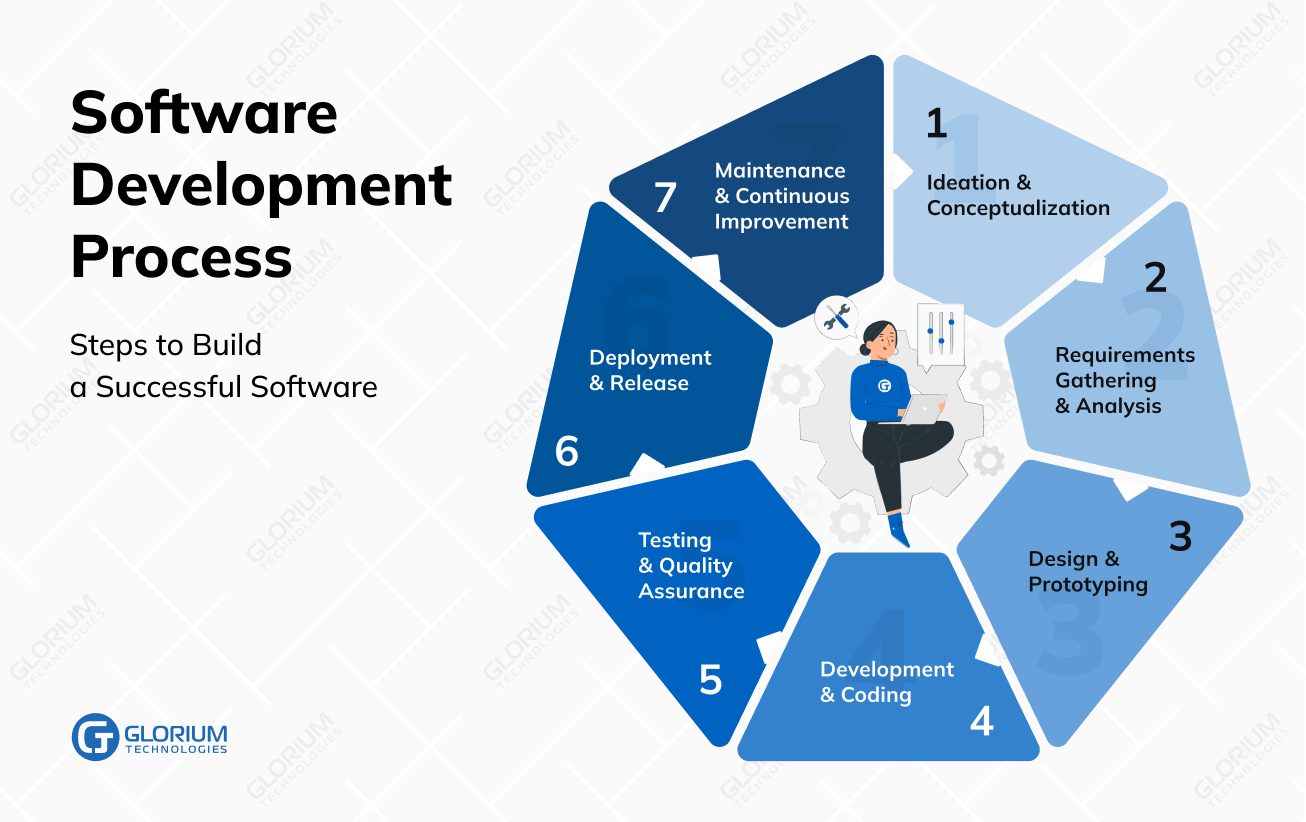
The first stage of the startup software development process is ideation and conceptualization. Startups brainstorm, identify market gaps, and envision software solutions that address specific customer needs. This stage involves market research, validating the concept, and defining the target audience.
Clear goals, vision, and a solid understanding of the problem the software will solve are crucial for setting the right direction for the subsequent stages.
The next stage is requirements gathering and analysis once the concept is defined. Startups collaborate with stakeholders, potential users, and domain experts to understand their needs, preferences, and pain points. This stage involves conducting interviews, surveys, and workshops to capture detailed requirements. It is essential to prioritize and define the minimum viable product (MVP) scope during this stage, focusing on the features that give the most value to users while keeping development efforts manageable.
With a clear understanding of requirements, startups move on to the design and prototyping stage. User experience (UX) designers and software architects collaborate to create intuitive and visually appealing designs. Prototypes are developed to validate the software’s functionality, usability, and flow. Iterative feedback loops with stakeholders and potential users help refine the design and ensure alignment with user expectations.
This stage sets the foundation for the development phase and plays a crucial role in delivering a user-centric software product.
The software takes shape in the development and coding stage. Startups leverage agile development methodologies, breaking the project into smaller, manageable tasks or user stories. Developers write code, following best practices and coding standards.
Continuous collaboration, communication, and feedback loops within the development team are crucial for ensuring progress and resolving any technical challenges. Regular testing and quality assurance processes are integrated to identify and fix bugs, ensuring a robust and stable software product.
Testing and quality assurance are pivotal in startup software development. Dedicated QA engineers and testers thoroughly validate the software against the defined requirements and test its functionality, performance, security, and compatibility across different platforms and devices.
Test automation is employed to streamline repetitive testing tasks and enhance efficiency. By identifying and resolving defects and usability issues, this stage ensures the software meets high-quality standards and provides a seamless user experience.
Once the software has successfully passed testing and quality assurance, it is ready for deployment and Release. Startups develop a deployment strategy, considering infrastructure requirements, scalability, and security.
Cloud-based platforms and DevOps practices are often utilized to streamline deployment and enable scalability. A controlled release approach, such as a phased rollout or beta testing, can gather real-world user feedback, fine-tune the software, and ensure a smooth launch.
Once a software product is developed and deployed, the journey continues for startups. Maintenance and continuous improvement are crucial steps in software development. This step involves addressing bugs, providing ongoing support, and actively seeking opportunities for enhancement based on user feedback and changing market needs.
To achieve success, startups need to navigate through various stages, from ideation to deployment, while ensuring efficiency and speed.
We provide valuable tips and strategies for startups to accelerate their software development and bring custom software solutions to market faster. So how can startups maximize their chances of achieving a robust and successful software product?
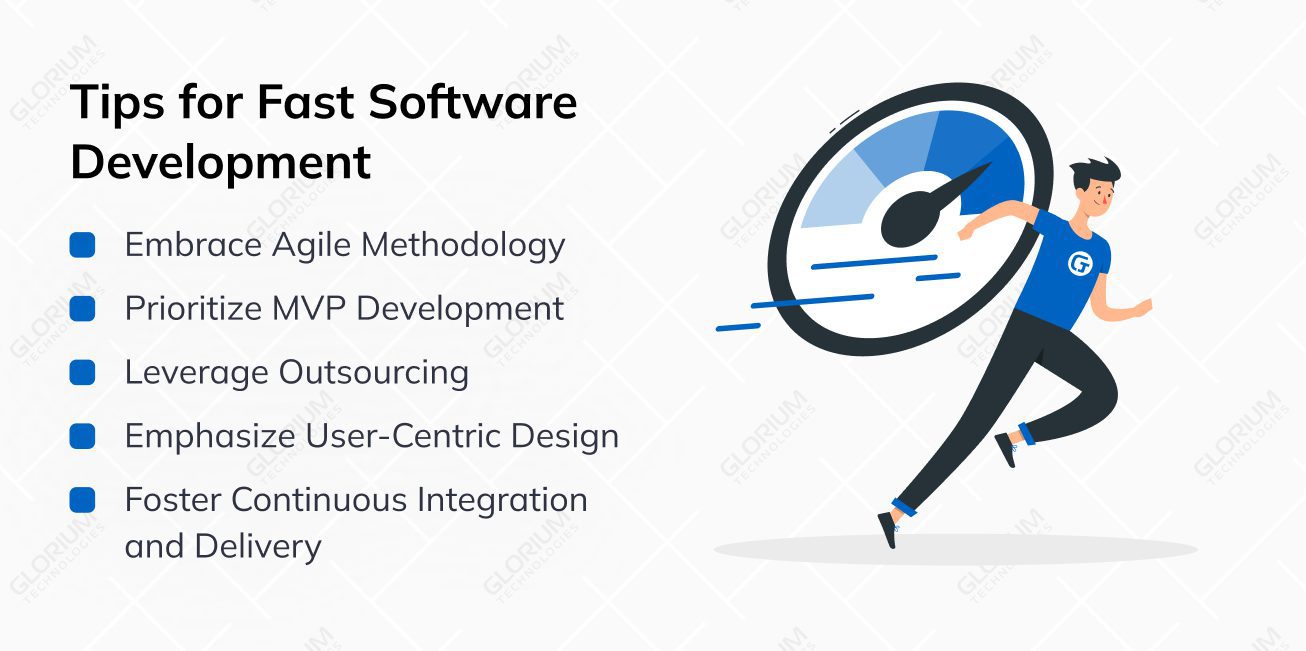
One of the main advantages of Agile for startups is its inherent flexibility and adaptability. Startups often operate in a dynamic environment where requirements can change rapidly. Agile allows startups to embrace these changes rather than resist them. By breaking the project into smaller iterations, startups can deprioritize features, adjust development efforts, and quickly respond to evolving market demands.
This flexibility enables startups to stay ahead of the competition, meet customer needs effectively, and deliver software that aligns with the latest market trends.
Agile methodology promotes iterative and incremental development, which is highly beneficial for startups. Rather than aiming for a fully developed product from the outset, startups focus on creating a Minimum Viable Product (MVP) with essential features. It allows them to deliver value to customers early, gather feedback, and validate assumptions.
By continuously iterating and refining their software based on user feedback, startups can optimize their product’s features, functionality, and user experience, ensuring it meets customer needs effectively and accelerates time-to-market.
Regarding software development for startups, one key tip for speeding up the process is prioritizing Minimum Viable Product (MVP) development. The MVP approach allows startups to get their product to market faster, validate their idea, and gather valuable feedback from early users.
The first step in prioritizing MVP development is to define and outline the core features and functionalities that will make up the initial version of the product. The MVP should address the fundamental problem or need that the startup aims to solve while keeping the scope manageable and development time minimal. By distilling the product into its essential elements, startups can focus their resources on delivering a functional and usable product that can be launched quickly.
By prioritizing MVP development, startups can minimize the risks associated with building a product that may not resonate with the target audience, enabling them to pivot or iterate early on based on real-world user validation.
It helps to concentrate on the core features, startups can streamline their development efforts and avoid unnecessary complexities. It allows them to release an initial product version sooner, gaining an early foothold in the market and capturing early adopters. The rapid time-to-market provides startups with a competitive advantage and generates valuable user feedback and market insights that can be used to iterate and improve the product.
Anna VoznaAccount Executive, Glorium Technologies
Additionally, prioritizing MVP development allows startups to optimize their resources effectively. By concentrating on the core features and functionalities, startups can allocate their limited resources efficiently, such as time, budget, and talent. This approach helps avoid unnecessary feature development and reduces the risk of over-engineering the product. Startups can direct their resources towards building a lean and market-ready product, avoiding wasteful development cycles and optimizing their use of time and resources. To avoid all challenges, you may choose to outsource mvp software development services.
Outsourcing has become an increasingly popular strategy for startups looking to accelerate their software development processes. By leveraging external expertise, startups can tap into a vast talent pool, enhance efficiency, and achieve cost savings.
Outsourcing allows startups to scale their development efforts quickly, access specialized skills, and focus on their core business objectives.
This projected growth signifies the increasing adoption of business process outsourcing services by companies worldwide as they recognize the numerous benefits and advantages of outsourcing. So how can it speed up software development while unlocking valuable expertise, efficiency, and cost savings?
Outsourcing software development enables startups to access specialized expertise that may not be available in-house. Startups can partner with outsourcing providers with deep domain knowledge and technical proficiency in specific areas of software development. This expertise can range from frontend and backend development to UI/UX design, quality assurance, and project management. By leveraging this external talent, startups can tap into a wealth of experience and accelerate their development process by utilizing practices and insights brought by the outsourcing team.
Outsourcing software development allows startups to significantly enhance their efficiency and reduce time-to-market. Startups can leverage their established processes, tools, and workflows. It streamlines the development process, eliminating bottlenecks and reducing time wasted on non-core activities. The outsourcing team can work in parallel with the startup’s internal team, ensuring faster development cycles and quicker software product delivery.
Cost savings and resource optimization are key drivers for startups considering outsourcing. By partnering with an outsourcing company, startups can significantly reduce software development startup costs. They can avoid the expenses of hiring and maintaining an in-house development team, such as salaries, benefits, infrastructure, and training. This cost advantage allows startups to optimize their resources, allocate budgets more efficiently, and focus their financial resources on core business activities.
Startups can easily scale their development teams up or down based on project requirements without the long-term commitments and administrative overhead of hiring or downsizing an in-house team. The outsourcing provider can quickly allocate additional resources when needed, ensuring that startups can meet deadlines, handle increased workloads, and take advantage of growth opportunities without compromising quality or productivity.
Outsourcing software development allows startups to focus on their core competencies and strategic priorities. By delegating the technical aspects to an outsourcing provider, startups can allocate more time and resources to their unique value proposition, market strategy, and customer engagement. This focus on core competencies helps startups sharpen their competitive edge and differentiate themselves in the market. Additionally, it frees up internal teams to concentrate on innovation, business development, and customer satisfaction, leading to overall growth and success.
User experience (UX) has emerged as a critical factor that makes the success of software products. Startups aiming to speed up their software development processes must prioritize user-centric design, focusing on creating engaging and intuitive experiences for their target audience. Placing users at the center of the development process can deliver products that meet customer expectations and drive satisfaction, adoption, and loyalty.
To create user-centric experiences, startups must conduct thorough user research. It involves gathering qualitative and quantitative data about user behaviors, preferences, and pain points through surveys, interviews, and usability testing, adoption.
By prioritizing simplicity and intuitiveness, startups can create a positive user experience that fosters engagement and encourages users to explore and utilize the full potential of the software product. Additionally, by seeking input from real users, startups can validate design decisions, identify areas for improvement, and refine the user experience iteratively.
Continuous integration and delivery establish a feedback loop that facilitates faster iterations and improvements. By integrating code changes frequently and automatically, startups can identify issues, conflicts, or errors early in development. The automated build and testing processes provide immediate feedback, allowing developers to address issues promptly.
This iterative feedback loop enables startups to make continuous improvements, enhancing the quality of the software and reducing the time spent on bug fixing and rework. The rapid feedback loop ensures that startups can quickly respond to market demands and deliver updates or new features on time.
With continuous quality assurance, startups can identify and address issues early, minimizing user impact and enhancing overall software quality. This approach allows startups to build and maintain a reputation for delivering high-quality products, fostering user satisfaction, and building customer trust.
With frequent integration and automated testing, startups can identify issues early in development, reducing the risk of critical bugs reaching production environments. If a problem arises after deployment, startups can quickly roll back to a previous stable version of the software.
This rollback capability ensures startups maintain a stable and reliable software product, minimizing user disruptions and mitigating potential business risks. The risk mitigation and rollback capability provided by CI/CD contribute to the overall stability and resilience of the software.
As a startup owner, you may find yourself wearing multiple hats to keep your business running smoothly. However, when developing your tech product, you may consider outsourcing full-stack development. It is especially true if you need more technical skills or resources to build a robust in-house product. Startups can benefit from outsourcing various software development services to leverage external expertise, optimize resource utilization, and accelerate development. Here are some key software development services for startups which can be considered outsourcing.
Startups can outsource full-stack development to external teams or agencies. Custom software development for startups possess front-end and back-end development expertise, allowing startups to create end-to-end solutions. Outsourcing full-stack development can benefit startups that require a comprehensive development approach without hiring separate front-end and back-end developers.
With the increasing demand for mobile applications, you can choose to outsource mobile app development to specialized development agencies. Outsourcing custom mobile app development for startups provides access to broader skills and experience in developing iOS and Android applications. Hiring software developers for startup can help to build user-friendly, high-performance mobile apps that align with the latest design and development trends.
User interface (UI) and user experience (UX) design are crucial for creating engaging and intuitive software products. Startups can outsource UI/UX design to experienced designers who can create visually appealing interfaces and optimize user interactions. Outsourcing UI/UX design ensures that startups deliver software products focusing on usability, aesthetics, and seamless user experiences.
Ensure the reliability of the software products by outsourcing quality assurance (QA) and testing services. External QA teams can conduct comprehensive testing, including functional, performance, security, and usability. Outsourcing QA and testing help startups identify and address issues early in development, resulting in higher-quality software and enhanced user satisfaction.
Startups can outsource DevOps and cloud services to streamline their software development and deployment processes. External DevOps teams can assist with infrastructure setup, continuous integration and delivery (CI/CD) implementation, and cloud platform management. Outsourcing DevOps and cloud services enable startups to optimize their development workflows, achieve scalability, and leverage cloud technologies efficiently.
After the initial development phase, startups can outsource support and maintenance services. It will ensure the smooth operation of their software products. External teams can provide ongoing technical support, bug fixing, and software updates, allowing startups to focus on their core business activities. Outsourcing support and maintenance services help startups promptly address user concerns and maintain their software’s performance and reliability.
At Glorium, our mission is to empower startups with cutting-edge technology solutions that drive growth and success. By partnering with our company, you can leverage our expertise, optimize your software development process, and gain a competitive edge in the market. Contact us today to learn how Glorium can help you achieve your software development goals.


Startups operate in a fast-paced environment and need to bring their products to market quickly to gain a competitive edge and capture early adopters. Speeding up software development allows startups to seize market opportunities, meet customer demands, and achieve business growth more rapidly.
Agile methodology promotes flexibility, iterative progress, and collaboration, enabling startups to respond quickly to changes and deliver incremental value to customers. By adopting Agile practices, startups can streamline their development process, shorten feedback loops, and accelerate time-to-market.
Prioritizing MVP development allows startups to focus on delivering the core features that provide the most value to users. By launching an MVP quickly, startups can validate their ideas, gather user feedback, and make data-driven decisions to optimize their product strategy and speed up development iterations.
Outsourcing software development services allows startups to leverage external expertise, access specialized skills, and optimize resource utilization. By partnering with experienced outsourcing providers, startups can scale their development efforts, reduce time-to-market, and accelerate their software development process.
User-centric design focuses on creating engaging and intuitive experiences for users. By understanding user needs, conducting research, and prioritizing usability, startups can streamline the development process, minimize rework, and deliver software products that resonate with their target audience more efficiently.
Automation tools and practices, such as automated testing and deployment, can significantly enhance the efficiency and reliability of software development. By automating repetitive tasks, startups can reduce manual errors, optimize development cycles, and deliver high-quality software products more quickly.
CI/CD enables startups to automate the integration, testing, and deployment of code changes, leading to faster iterations and rapid responses to market demands. By implementing CI/CD practices, startups can accelerate their development cycles, enhance collaboration, and deliver software updates or new features more efficiently.
A8: Startups can ensure software quality by implementing continuous testing, involving quality assurance specialists, and leveraging automated testing tools. By prioritizing quality assurance throughout the development process, startups can mitigate risks, reduce rework, and deliver reliable software products at a faster pace.
Effective collaboration and communication among development teams, stakeholders, and outsourcing partners are essential for streamlining the development process. By fostering transparent communication, sharing insights, and aligning goals, startups can minimize delays, resolve issues quickly, and ensure efficient coordination for faster software development.
A10: Startups can maintain speed and agility by continually optimizing their processes, embracing scalable technologies, and fostering a culture of innovation. Regularly evaluating and improving development practices, leveraging cloud infrastructure, and encouraging continuous learning and improvement can help startups sustain their speed and agility as they grow.
Remember to customize these questions and answers to align with the specific content of your article.
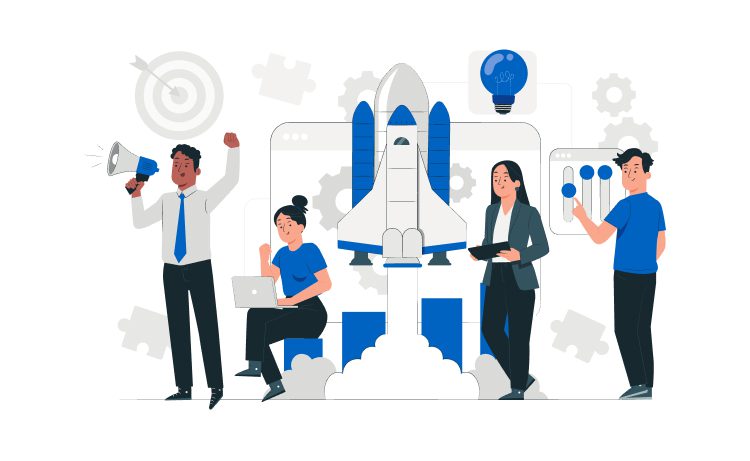


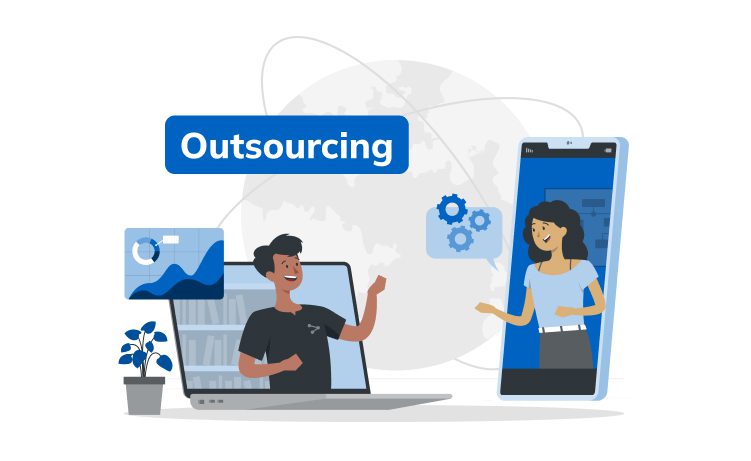
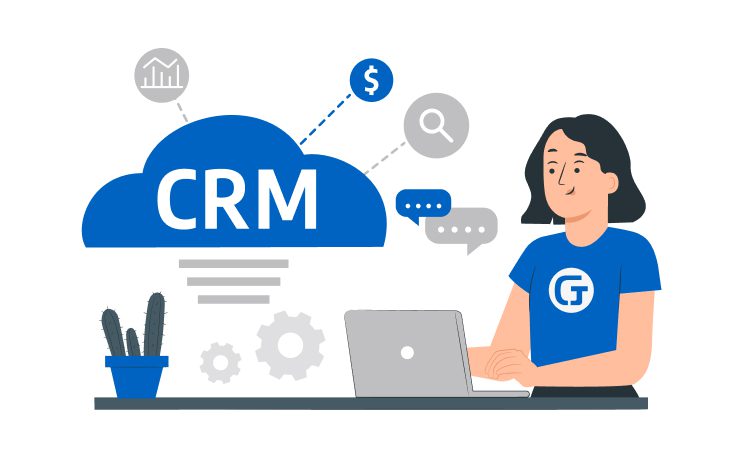


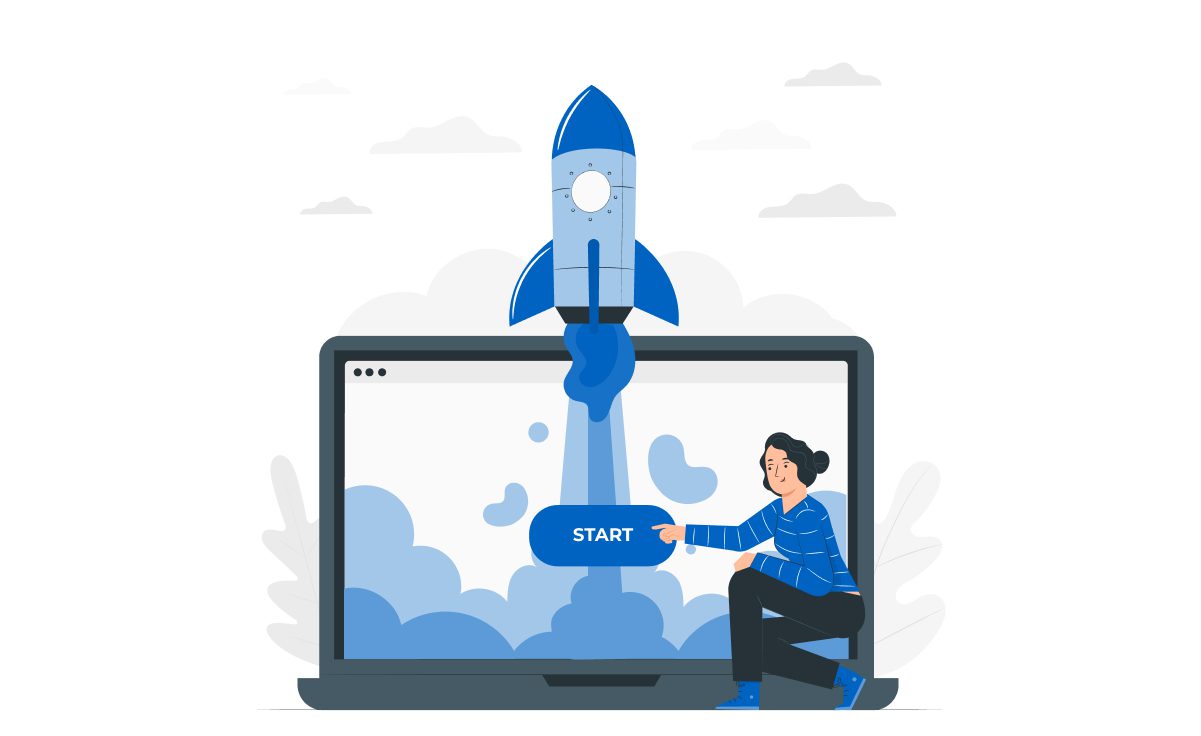

| Cookie | Duration | Description |
|---|---|---|
| cookielawinfo-checkbox-analytics | 11 months | This cookie is set by GDPR Cookie Consent plugin. The cookie is used to store the user consent for the cookies in the category "Analytics". |
| cookielawinfo-checkbox-functional | 11 months | The cookie is set by GDPR cookie consent to record the user consent for the cookies in the category "Functional". |
| cookielawinfo-checkbox-necessary | 11 months | This cookie is set by GDPR Cookie Consent plugin. The cookies is used to store the user consent for the cookies in the category "Necessary". |
| cookielawinfo-checkbox-others | 11 months | This cookie is set by GDPR Cookie Consent plugin. The cookie is used to store the user consent for the cookies in the category "Other. |
| cookielawinfo-checkbox-performance | 11 months | This cookie is set by GDPR Cookie Consent plugin. The cookie is used to store the user consent for the cookies in the category "Performance". |
| viewed_cookie_policy | 11 months | The cookie is set by the GDPR Cookie Consent plugin and is used to store whether or not user has consented to the use of cookies. It does not store any personal data. |